ヤマイモモドキ科は2心皮からなる子房を持つが、1心皮は柱頭ができず不稔となる。不稔の柱頭は稔性柱頭よりも小さい。Cardiopteris quinqueloba の不稔花柱は受精後伸長するが、Gonocaryum lobbianumの不稔花柱は伸長しない。
Species in the Cardiopteridaceae has ovules composed of two carpels, one of which has fertile stigma. The sterile stigma is much smaller than the fertile stigma. The sterile style elongate after the fertilization of the fertile carpel in Cardiopteris, but not in Gonocaryum.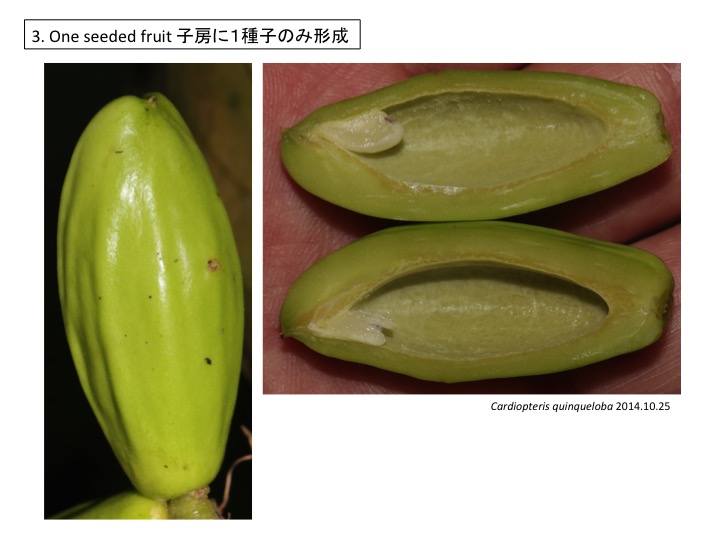
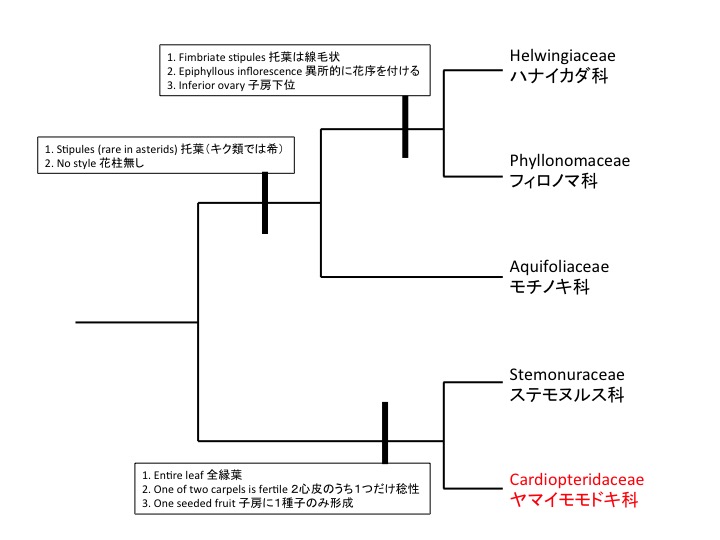
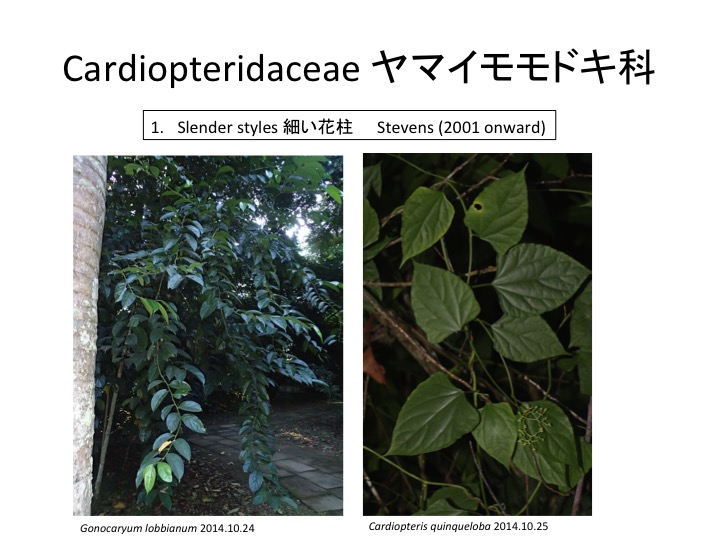
I appreciate Drs. Yunhong Tan, Pan Bo, Liu Li, and Chunli Chen for their excellent support to observe plants in this family,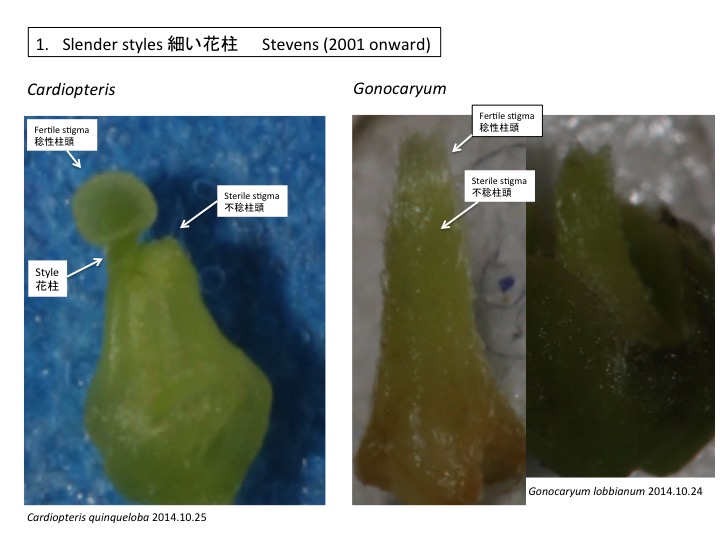
Cardiopteris quinquelobaの花柱は細くなるが、Gonocaryum lobbianumの花柱は細くならない
The style of the fertile carpel becomes slender in Cardiopteris quinqueloba but that does not in Gonocaryum lobbianum.
Goniocarpium lobbianumは畝のある果実を作る。この畝はCardiopterisの子房の翼と似たような制御系で形成されるのだろうか。Goniocarpium lobbianumの果実は、子房の向軸背軸側と左右方向の4方向により大きな畝ができるので、Cardiopterisと似たような位置決定機構と局所的細胞分裂伸長促進機構を持っているのかも知れない。
Goniocarpium lobbianum forms ridged fruits. It is unknown whether these ridges are formed with the similar developmental program used in the wing formation in Cardiopteris.
Cardiopteris quinquelobaの葉の形態は外部環境、生育段階によって、異なった形となり、異型葉性を示す。異なった形の葉が形成されるのだが、それぞれの形態が完全に中間型でつながるわけではない。このような形態的ギャップがどうしてできるのかは未解明である。形態的ギャップは、大進化における中間型が見つからないという問題を考える上でも、ヒントを与えてくれる可能性がある。どうして形態変化にギャップが生じるのかの分子機構解明は今後の課題である。
Leaves of Cardiopteris quinqueloba changes their morphology, which is called heterophylly. As in other heterophylly, the morphological change is not completely gradual but there is a kind of threshold of morphological changes. The gap between different morphologies is a still remaining question in evolutionary biology, especially when we explain macro evolution.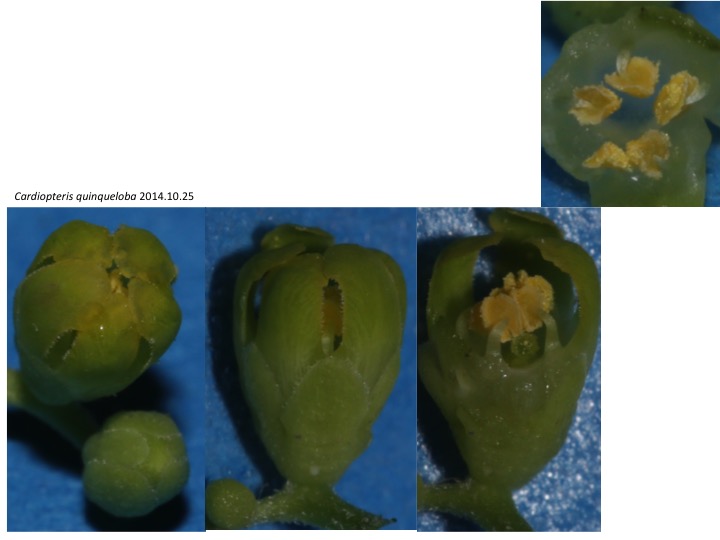
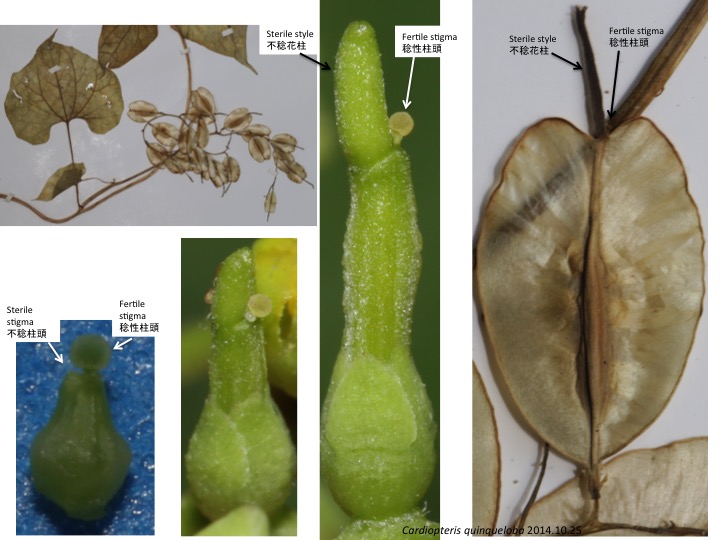
2枚の心皮のうち、1枚の先端にのみ稔性柱頭が発達する。稔性心皮での受精後、不稔性心皮の花柱が伸長し、肉質になる。仮種皮のような働きをしているのではないかと考えられている(Tobe 2012)。稔性心皮の子房部は果実が成熟するにつれて、左右方法に翼を形成する。
翼は局所的な介在成長によって生じるが、どうやって局所的に制御しているのかは謎である。心皮は葉的器官であるが、葉は心皮ほど大きな形態変化をおこさない。心皮の大きな形態変化は、適応的であるという理由に加えて、胚珠や他の心皮との間での新しい細胞間コミュニケーションの出現などによる構造的な理由があって引き起こされているのかもしれない。また、果実は葉とは異なった二次代謝産物を作るので、その影響かもしれない。二次代謝産物と形態形成との関係はまだよくわかっていない。
Cardiopteris forms two carpels, one of which is fertile with functional stigma. After the fertilization of the fertile carpel, the style of the sterile carpel elongates and becomes fresh. This may function as an aril (Tobe 2012). The fertile carpel forms wings in right and left directions.
Wings of the ovary are formed by intercalary growth, but it is unknown how such growth is regulated. Carpels are an leafy organ but much more variable than leaves. In addition to the adaptive significance, there may be mechanistic reasons for the morphological diversity. For example, interactions to ovules and other carpels, which do not occur in leaf development, may be related. Also, fruits form characteristic secondary metabolites, which may be related. Relationships between metabolome and development are a challenging field in developmental biology.
Tobe, H. 2012. Floral structure of Cardiopteris (Cardiopteridaceae) with special emphasis on the gynoecium: systematic and evolutionary implications. J. Plant Res. 125: 361-369.

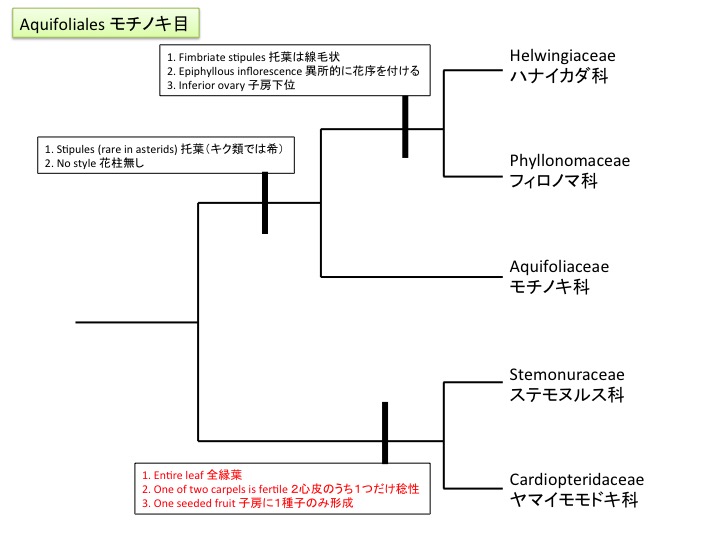
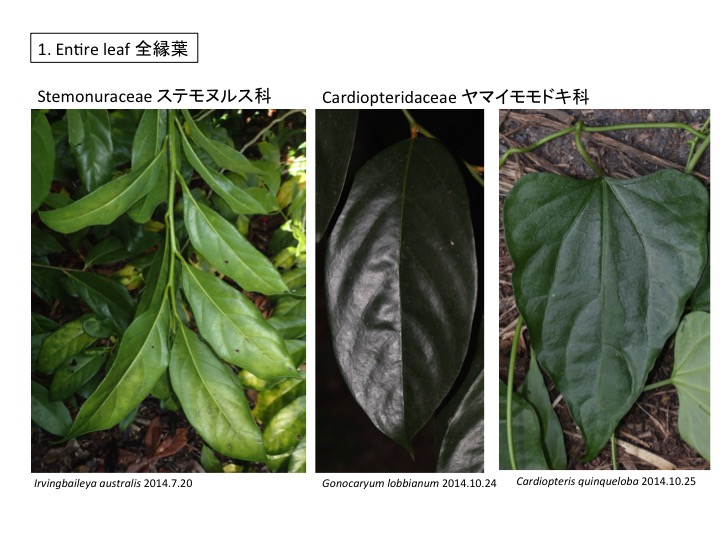
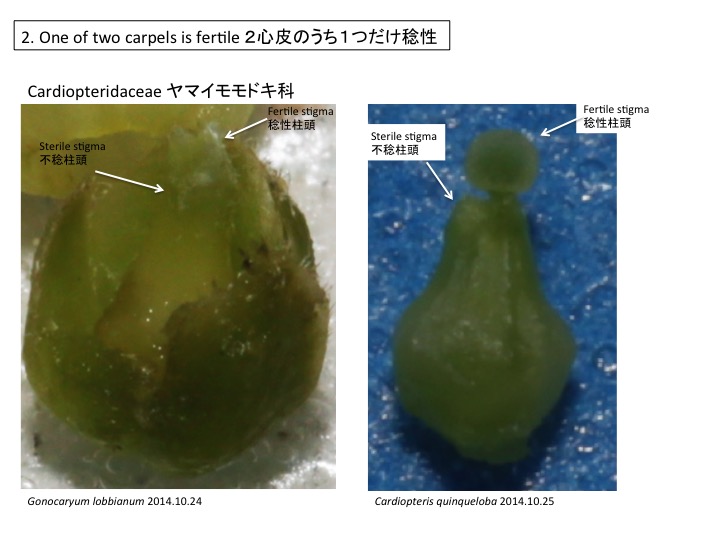
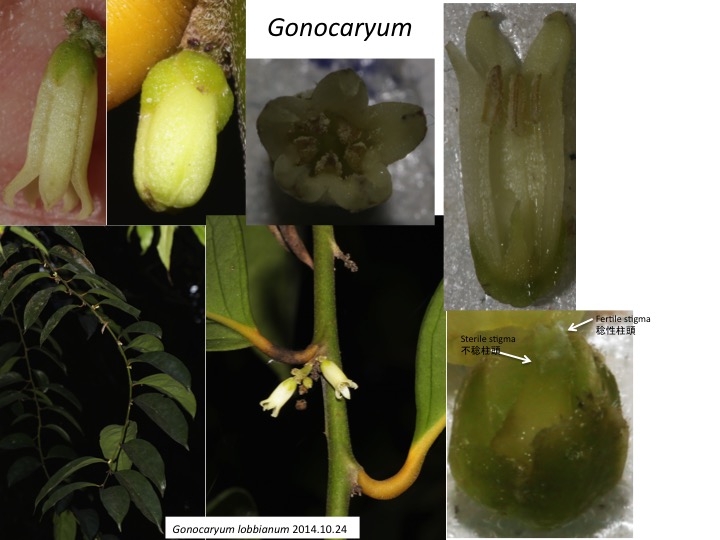
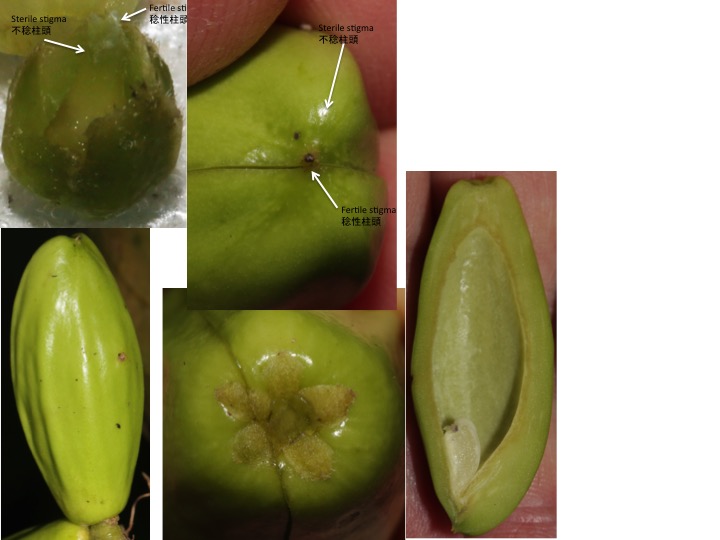
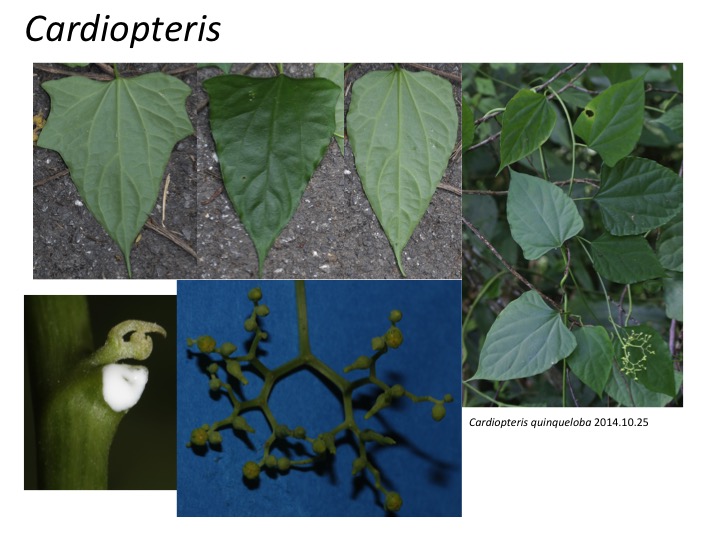
Hi, dear Mitsuyasu, I am very glad to see your new lecture notes mentioned the plants we saw in YUNNANG! Thank you for showing your appreciation here. It is our great pleasure to observe plants with you together. The professional young Dr. Yunhong Tan gave us really great help. I forgot to tell you that Tan is his family name.
The fleshy sterile stigma of Cardiopteris quinqueloba is quite interesting.
Chunli 2014.11.25